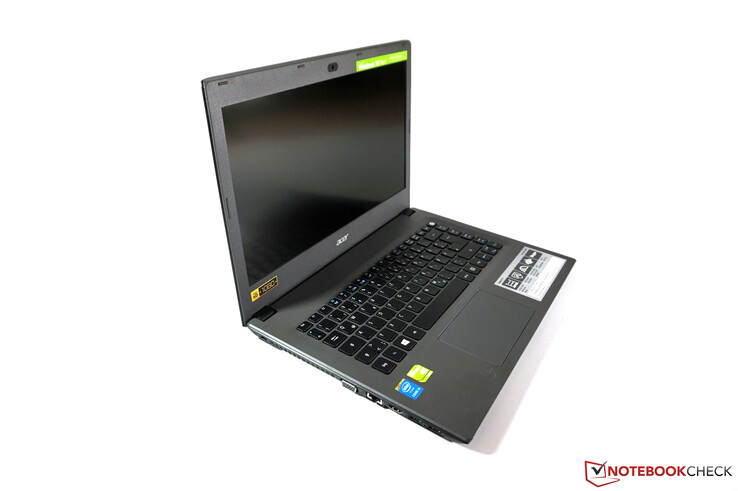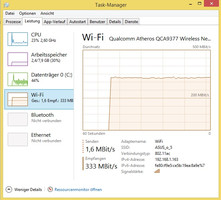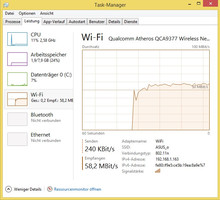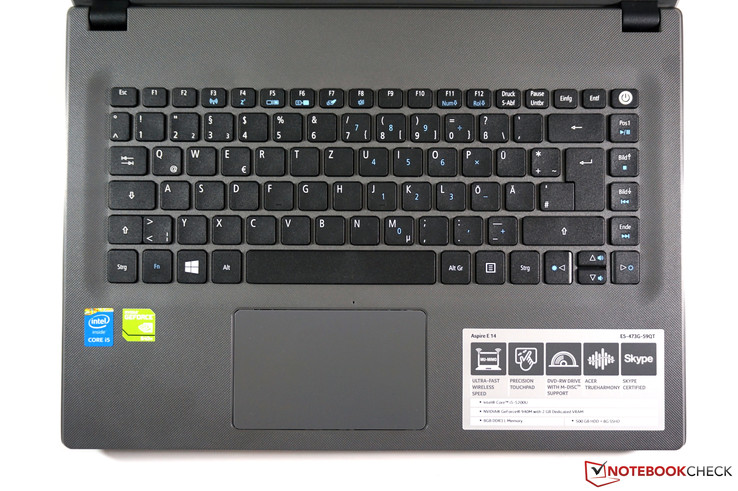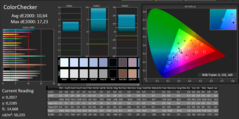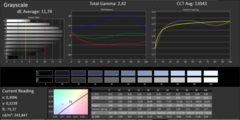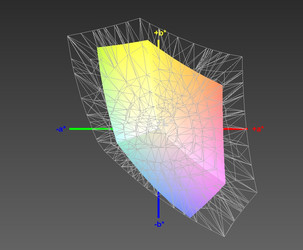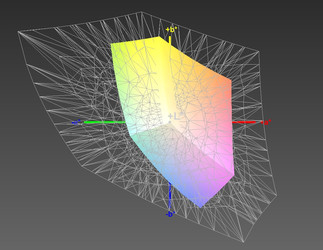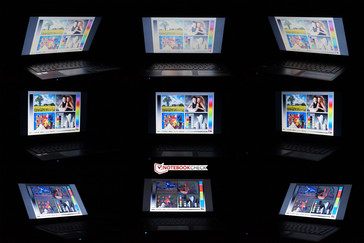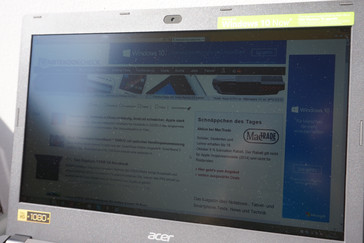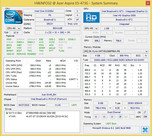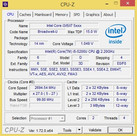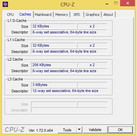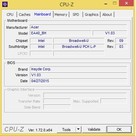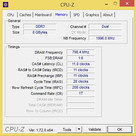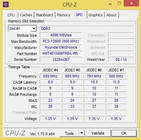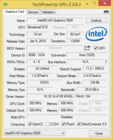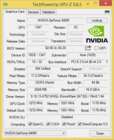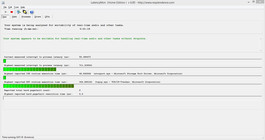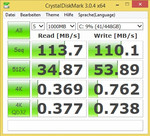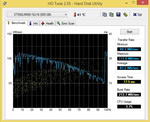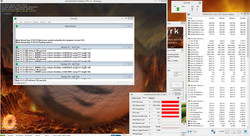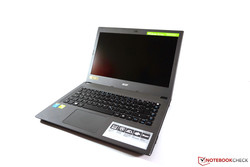Acer Aspire E5-473G Notebook Review

For the original German review, see here.
Acer’s completely reworked Aspire E-series represents inexpensive all-round notebooks with a good price-performance ratio. There are four different screen sizes in total, starting with a 13.3-inch device all the way up to a big 17-inch notebook. We already reviewed the two bigger versions Aspire E5-772G (17-inch) as well as the Aspire E5-573G (15-inch). Now we are having a look at the Aspire E5-473G with its 14-inch screen. The hardware equipment is basically very similar to the bigger siblings, because once again you get a dedicated Nvidia GPU besides a current Intel ULV processor.
While there is quite a lot of competition in the market of 15 and 17-inch multimedia notebooks, the situation is a bit different for the smaller 14-inch form factor. This display size is traditionally mainly used by business and not multimedia notebooks. One comparison device for our review unit is the Lenovo ThinkPad E450, which is also equipped with a dedicated graphics card as well as a matte display. Another potential rival is the Lenovo Yoga 3 14 that we just recently reviewed with the identical hardware combination. It is a bit more expensive and more versatile thanks to the flexible hinges, but it is very well-suited to compare the performance of the hardware.
Case
The most noticeable design feature of the chassis is the cloth-like structure on the top of the lid and the bottom of the device. This does create a very appealing impression, but the structure is, unfortunately, also very susceptible to dirt and hard to clean. The matte materials continue on the inside. The display frame is made of smooth and matte plastic, while the top of the base unit is also structured.
Neither the dimensions nor the weight of 2 kg can compete with Ultrabooks, but they are still okay for a 14-inch device. The general build quality leaves a decent impression. It is possible to dent the base unit a bit, especially above the DVD drive, but there is hardly any creaking. Only the cover is too easy to twist for our taste and pressure from the back also creates picture distortions. The two hinges keep the display well in position but cannot prevent a certain amount of bouncing. There is no maintenance hatch at the bottom and the battery is fixed inside the chassis as well.
According to the Acer homepage, the Aspire will be available in six different colors (black, brown, red, blue, white, green), but the availability is limited to the black version so far.
Connectivity
The slightly "thicker" chassis is well-used, because all ports are available in the standard size. Besides the usual USB ports (2x USB 3.0, 1x USB 2.0) and the digital HDMI output, Acer also includes an Ethernet adaptor and even a VGA port. Except for the power connector and the slot for a Kensington lock, however, all the ports are located very far to the front and are also close to each other. The rest of the space is occupied by the DVD burner and the fan exhaust.
Communication
Besides the Realtek RTL8168/8111 Gigabit-Ethernet adaptor for wired networks, you can obviously use wireless Internet connections with the Acer Aspire E5-473G as well. Acer uses a module from Qualcomm Atheros, more precisely the QCA9377 module. It supports the current Wi-Fi standards up to 802.11ac in 2.4 as well as 5 GHz networks (1x1) besides Bluetooth 4.1. According to a press release from Qualcomm, the chip is supposed to support "MU-MIMO" (multi-user multi-input/multi-output) and should work very well with products from AVM. We checked that with a Fritz!Box 7490 but could not determine any performance or signal advantages compared to the Asus RT-AC56U router.
The Wi-Fi connection was never a problem during our review period. We did not encounter any dropouts and the performance is more than sufficient for common tasks. We were able to transfer files at up to ~330 Mbps (802.11ac) or almost 60 Mbps (802.11n), respectively. The connection with a Bluetooth mouse was no problem, either.
The webcam above the display takes pictures and videos (29 fps) in the HD resolution. The quality is below-average and the results are very blurry and pale, even under good lighting conditions. The microphone leaves a better impression, but it cannot really convince us either. Voices distort rather quickly and you can also hear background noise.
Accessories
The box of the Acer Aspire E5-473G contains the notebook itself, a 65-Watt power adaptor, a quick-start guide as well as information about the international warranty. Special accessories are not available for the Aspire E5.
Maintenance
The maintainability of the Acer Aspire E5-473G is heavily limited and basically not available for inexperienced users. However, this is not a compact Ultrabook, where all the components are soldered onto the motherboard in favor of the thickness, so we cannot really understand these limitations. There is no maintenance hatch, which means you have to remove the whole bottom cover to gain access to the components. Besides a large number of screws, the manufacturer also uses additional plastic clips that can easily break. Our review unit is a shop device, so we cannot give you any detailed information about the maintainability. We can at least suspect that both the memory (2 slots) as well as the 2.5-inch hard drive can be replaced.
Warranty
The standard warranty period of the Acer E5-473G is two years (Pick-up & Return). Customers also get a one-year International Traveler's Warranty.
Input Devices
Keyboard
Acer uses a chiclet keyboard with black keys as well as a white lettering. The layout takes some time getting used to, because there is an additional column with function keys as well as the power button on the right side. Except for the space bar, the slightly concave keys don’t clatter and can be characterized by their firm pressure point. The travel is okay and you can only notice some flexing in the area above the optical drive. There is no criticism for the mechanics, but we cannot understand why there is no background illumination, so it is not easy to use the input in darker environments.
Touchpad
The ELAN touchpad measures 10.5 x 6.5 cm and has a smooth surface. It is a ClickPad with integrated buttons and the lower two-thirds can be used for clicking. All in all, the mouse replacement is very precise and gestures with two fingers (scrolling, for example) are executed without problems. The driver, however, does not offer any adjustability and the pad produces a pretty cheap noise during clicking.
Display
Acer equips the E5-473G with a matte Full HD panel, but it is only based on the TN technology. The native resolution of the 14-inch screen is 1920x1080 pixels, which results in a very practical pixel density of 157 PPI that can be comfortably used without scaling. There are currently no alternative display options for the Aspire E5.
Our measurements do not show good results for the panel, and this starts with the luminance. 228 cd/m² on average is not very bright, even though the situation is not much better for the two rivals. Subjectively, the colors of the panel don’t appear very vivid and dark content looks grayish. This is, however, not very surprising since the black value is pretty high at 0.54 cd/m² and only results in a contrast ratio of just 441:1 in combination with the mediocre luminance. The Lenovo E450 is on par, while the Lenovo Yoga 3 14 manages an excellent contrast of more than 1,000:1 thanks to the much lower black value. At least the brightness distribution of 90% is very even and we cannot see any screen bleeding.
| |||||||||||||||||||||||||
Brightness Distribution: 90 %
Center on Battery: 196 cd/m²
Contrast: 441:1 (Black: 0.54 cd/m²)
ΔE Color 10.64 | 0.5-29.43 Ø5
ΔE Greyscale 11.74 | 0.57-98 Ø5.3
57% sRGB (Argyll 1.6.3 3D)
36% AdobeRGB 1998 (Argyll 1.6.3 3D)
39.07% AdobeRGB 1998 (Argyll 2.2.0 3D)
56.9% sRGB (Argyll 2.2.0 3D)
37.82% Display P3 (Argyll 2.2.0 3D)
Gamma: 2.42
| Acer Aspire E5-473G-59QT GeForce 940M, 5200U, Seagate ST500LM000 Solid State Hybrid Drive | Lenovo Yoga 3 14-80JH0035GE GeForce 940M, 5200U, Samsung SSD PM851 256 GB MZYTE256HMHP | Lenovo ThinkPad E450 20DDS01E00 Radeon R7 M260, 5200U, Samsung CM871 MZ7LF192HCGS | |
|---|---|---|---|
| Display | 4% | 7% | |
| Display P3 Coverage | 37.82 | 39.31 4% | 40.37 7% |
| sRGB Coverage | 56.9 | 58.8 3% | 60.8 7% |
| AdobeRGB 1998 Coverage | 39.07 | 40.65 4% | 41.71 7% |
| Screen | 37% | -4% | |
| Brightness middle | 238 | 239 0% | 218 -8% |
| Brightness | 228 | 227 0% | 211 -7% |
| Brightness Distribution | 90 | 88 -2% | 76 -16% |
| Black Level * | 0.54 | 0.21 61% | 0.53 2% |
| Contrast | 441 | 1138 158% | 411 -7% |
| Colorchecker dE 2000 * | 10.64 | 5.4 49% | 11.16 -5% |
| Greyscale dE 2000 * | 11.74 | 4.71 60% | 12.58 -7% |
| Gamma | 2.42 91% | 2.51 88% | 2.34 94% |
| CCT | 13043 50% | 6354 102% | 14940 44% |
| Color Space (Percent of AdobeRGB 1998) | 36 | 37 3% | 39 8% |
| Color Space (Percent of sRGB) | 57 | 59 4% | 61 7% |
| Total Average (Program / Settings) | 21% /
29% | 2% /
-1% |
* ... smaller is better
The other measurements with the software CalMAN also suggest the display of a cheap office notebook, but certainly not a multimedia notebook. The average DeltaE deviations compared to the sRGB color space surpass 10 for the colors and 11 for the grayscale. All the colors are also clearly shifted towards blue. This results in a clearly visible blue cast in combination with the extremely cool color temperature of 13,043 K (ideal 6,500 K). The situation is once again very similar for the Lenovo E450, while the Yoga 3 14 has a significant advantage in this section thanks to the IPS panel. This means the display is not suited for professional scenarios, which is also confirmed by the low color-space coverage (sRGB: 57%, AdobeRGB: 36%).
Thanks to the matte panel surface, the notebook should be well-suited for outdoor scenarios. However, the low brightness, which is even reduced to 196 cd/m² on battery power, is just not sufficient to ensure a comfortable use in bright environments. You can still see the display content, but it will be tiring for the eyes after a short while.
The TN panel in the Aspire E5-473G handles horizontal shifts surprisingly well, because there are basically no picture distortions up to an angle of 45 degrees. The situation does, however, quickly change when you look at the display from above or below. The picture is much brighter from above, while there will be inverted colors from below. This also means you will have to adjust the opening angle of the display quite often in practice.
Performance
Devices from the Acer E-series are inexpensive all-rounders that are powerful enough for many usage scenarios. Our review unit is equipped with a current Intel ULV dual-core CPU, 8 GB memory and a dedicated Nvidia GeForce 940M GPU, so it is also interesting for casual gamers. Sufficient storage is provided by the 500 GB hard drive, which is also equipped with an 8 GB SSD cache. Other configurations are currently not available.
Processor
The Intel Core i5-5200U is a very popular processor for compact notebooks and is also used by our two comparison devices. The comparatively low nominal clock of just 2.2 GHz can be compensated for by the Turbo Boost, because the chip can reach up to 2.7 GHz when you stress one core (or 2.5 GHz for two cores). The dual-core CPU from the Broadwell generation can execute up to 4 threads simultaneously thanks to Hyper-Threading.
The performance of the processor is more than sufficient for common tasks. Big differences to quad-core processors can only be noticed in heavily parallelized applications. The low power consumption of up to 15 Watts is no problem and the processor can execute the Cinebench benchmarks with the maximum Turbo clock. This means the results are similar to other devices and the full performance is also available on battery power. More benchmarks and information are available in our Tech-section.
| Cinebench R11.5 | |
| CPU Multi 64Bit (sort by value) | |
| Acer Aspire E5-473G-59QT | |
| Lenovo Yoga 3 14-80JH0035GE | |
| Lenovo ThinkPad E450 20DDS01E00 | |
| CPU Single 64Bit (sort by value) | |
| Acer Aspire E5-473G-59QT | |
| Lenovo Yoga 3 14-80JH0035GE | |
| Lenovo ThinkPad E450 20DDS01E00 | |
| Cinebench R10 | |
| Rendering Multiple CPUs 64Bit (sort by value) | |
| Acer Aspire E5-473G-59QT | |
| Lenovo Yoga 3 14-80JH0035GE | |
| Rendering Single CPUs 64Bit (sort by value) | |
| Acer Aspire E5-473G-59QT | |
| Lenovo Yoga 3 14-80JH0035GE | |
| Rendering Multiple CPUs 32Bit (sort by value) | |
| Acer Aspire E5-473G-59QT | |
| Lenovo Yoga 3 14-80JH0035GE | |
| Rendering Single 32Bit (sort by value) | |
| Acer Aspire E5-473G-59QT | |
| Lenovo Yoga 3 14-80JH0035GE | |
| Lenovo ThinkPad E450 20DDS01E00 | |
System Performance
The benchmark results clearly show how much the 7th iteration of PCMark benefits from an SSD. Despite the otherwise comparable components, our review unit with an SSHD does not stand a chance against the comparison devices that manage an advantage of 65% (Yoga 3 14) and 73% (ThinkPad E450) thanks to the flash storage. More interesting is therefore the newer PCMark 8 that sets other priorities in the tests. Both the Home and the Work test determine that all three devices are pretty much on par.
Subjectively, the performance of our review unit is okay. There are obviously slight delays compared to devices with real SSDs, but we did not have the impression that the notebook was too slow or sluggish during our review period.
| PCMark 7 - Score (sort by value) | |
| Acer Aspire E5-473G-59QT | |
| Lenovo Yoga 3 14-80JH0035GE | |
| Lenovo ThinkPad E450 20DDS01E00 | |
| PCMark 8 | |
| Home Score Accelerated v2 (sort by value) | |
| Acer Aspire E5-473G-59QT | |
| Lenovo Yoga 3 14-80JH0035GE | |
| Lenovo ThinkPad E450 20DDS01E00 | |
| Work Score Accelerated v2 (sort by value) | |
| Acer Aspire E5-473G-59QT | |
| Lenovo Yoga 3 14-80JH0035GE | |
| Lenovo ThinkPad E450 20DDS01E00 | |
| PCMark 7 Score | 2780 points | |
| PCMark 8 Home Score Accelerated v2 | 3167 points | |
| PCMark 8 Work Score Accelerated v2 | 4151 points | |
Help | ||
Storage Solution
Acer uses a 500 GB Solid State Hybrid Drive for the Aspire E5-473G, which combines a conventional hard drive with a small SSD storage. This small storage can be used to accelerate frequently used applications. However, the hard drive has to learn which applications you use first, and the cache is just not big enough at 8 GB for a really noticeable performance difference. The conventional part of the hard drive runs at 5,400 rpm and manages an average transfer rate of 87 MB/s according to HD Tune. This is a decent result for a 5,400 rpm drive.
You can use around 420 GB for your own files and applications ex-works. More information and comparisons with other hard drives are available in our SSD/HHD benchmark list.
GPU Performance
Besides the previously mentioned dedicated Nvidia GeForce 940M GPU, the Acer Aspire E5-473G can obviously use the integrated processor GPU Intel HD Graphics 5500 as well. The switch between the two GPUs happens automatically via Nvidia’s Optimus technology, which works pretty well. It is also possible to adjust the allocation in the graphics driver.
The Intel HD Graphics 5500 is the medium "GT2" version of the GPU and provides sufficient performance for simple tasks like web browsing (including YouTube videos) as well as video playback. The IGP might even have an advantage during video decoding when the application supports Intel’s efficient Quick Sync technology.
The GeForce 940M is a mainstream graphics card that is already based on the current Maxwell architecture. It has 2 GB DDR3 video memory (64-bit interface) and a core clock of 1,072 MHz, which can be increased up to 1,176 MHz via GPU-Boost. More technical specification about the 940M is available in our Tech-section.
The synthetic benchmarks show that the graphics card can always manage a small lead over the identical 940M inside the Lenovo Yoga 3 14, while the Radeon R7 M260 in the ThinkPad E450 falls behind by up to 30 % depending on the test. The full performance of the graphics card (including Boost) is also available on battery power.
| 3DMark | |
| 1920x1080 Fire Strike Score (sort by value) | |
| Acer Aspire E5-473G-59QT | |
| Lenovo Yoga 3 14-80JH0035GE | |
| Lenovo ThinkPad E450 20DDS01E00 | |
| 1280x720 Cloud Gate Standard Score (sort by value) | |
| Acer Aspire E5-473G-59QT | |
| Lenovo Yoga 3 14-80JH0035GE | |
| Lenovo ThinkPad E450 20DDS01E00 | |
| 1280x720 Ice Storm Standard Score (sort by value) | |
| Acer Aspire E5-473G-59QT | |
| Lenovo Yoga 3 14-80JH0035GE | |
| Lenovo ThinkPad E450 20DDS01E00 | |
| 3DMark 11 - 1280x720 Performance (sort by value) | |
| Acer Aspire E5-473G-59QT | |
| Lenovo Yoga 3 14-80JH0035GE | |
| Lenovo ThinkPad E450 20DDS01E00 | |
| 3DMark 06 Standard Score | 12138 points | |
| 3DMark 11 Performance | 2560 points | |
| 3DMark Ice Storm Standard Score | 42423 points | |
| 3DMark Cloud Gate Standard Score | 6231 points | |
| 3DMark Fire Strike Score | 1465 points | |
Help | ||
Gaming Performance
The advantage from the synthetic benchmarks is also translated into the gaming performance. Tomb Raider shows an advantage between 9 and 11% compared to the similarly equipped Lenovo Yoga 3 14 depending on the settings. Except for current blockbuster titles like GTA V, for example, which require a drop to medium details, many games can be enjoyed smoothly in high settings. Left-handers could have problems with the fan exhaust on the left when they use an external mouse, but we will have a closer look at that in the Temperature section. More gaming benchmarks for the 940M are available here.
| Tomb Raider | |
| 1024x768 Low Preset (sort by value) | |
| Acer Aspire E5-473G-59QT | |
| Lenovo Yoga 3 14-80JH0035GE | |
| 1366x768 Normal Preset AA:FX AF:4x (sort by value) | |
| Acer Aspire E5-473G-59QT | |
| Lenovo Yoga 3 14-80JH0035GE | |
| 1366x768 High Preset AA:FX AF:8x (sort by value) | |
| Acer Aspire E5-473G-59QT | |
| Lenovo Yoga 3 14-80JH0035GE | |
| 1920x1080 Ultra Preset AA:FX AF:16x (sort by value) | |
| Acer Aspire E5-473G-59QT | |
| Lenovo Yoga 3 14-80JH0035GE | |
| low | med. | high | ultra | |
| Tomb Raider (2013) | 136.6 | 67.5 | 36.8 | 18.1 |
| BioShock Infinite (2013) | 96.1 | 53.4 | 43.39 | 14.43 |
| GTA V (2015) | 66.9 | 55.3 | 15.24 |
Emissions
System Noise
The fan is usually hardly audible at ~32 dB(A) in practice. This can also be said about the hard drive, but it will produce a slight clattering periodically. The fan does not even get inconveniently loud under load and reaches up to 41 dB(A) during our stress test. It does, however, react pretty quickly to different load states and appears a bit jumpy. However, we could not notice any annoying characteristics like high-pitched sounds. The two comparison devices Yoga 3 14 and ThinkPad E450 are on a very similar level.
The DVD drive leaves a negative impression, because it can be annoying at up to 38.6 dB(A) during DVD playback, especially during quiet movie scenes. You should use headphones in this scenario if possible.
Noise Level
| Idle |
| 32.2 / 32.4 / 33.4 dB(A) |
| DVD |
| 38.6 / dB(A) |
| Load |
| 37.7 / 41 dB(A) |
 | ||
30 dB silent 40 dB(A) audible 50 dB(A) loud |
||
min: | ||
Temperature
We can already measure a higher temperature of 36 °C at the right front while idling, which is the location of the mechanical hard drive. We can see a pretty steep temperature gradient at the left side and the hotspot is at the center of the keyboard, which can cause sweaty fingers during typing. You should also avoid the fan exhaust at the left side, because direct contact with the skin will be inconvenient. This could also be a problem when left-handers use an external mouse. It is no problem to use the device on your lap as long as you avoid maximum load.
Our stress test (Prime95 and FurMark for at least one hour) simulates maximum stress for the two components. The processor temperature quickly reaches more than 80 °C, which will cause the chip to reduce the clock to just 500 MHz. The clock is increased as soon as the chip cooled down to around 70 °C until it once again reaches 80 °C (only takes a couple of seconds) and repeats the behavior. However, the graphics card can maintain its maximum Turbo clock of 1,176 MHz and reaches up to 83 °C. The behavior of the notebook is identical on battery power. A 3DMark06 test run immediately after the stress test determined a slightly lower result (11,575 vs. 12,138 points when the device is cold).
The stress test represents a pretty impractical scenario to simulate maximum load for the system and show the limits. We therefore performed the Unigine Heaven Benchmark as well, which is a more realistic simulation for gaming scenarios. The graphics card can once again maintain its maximum Turbo clock of 1,176 MHz, but the processor only fluctuates between 800 - 1,200 MHz and just rarely manages up to 1.6 GHz. This means it could be a bottleneck in very CPU-demanding titles.
(±) The maximum temperature on the upper side is 44.4 °C / 112 F, compared to the average of 36.9 °C / 98 F, ranging from 21.1 to 71 °C for the class Multimedia.
(-) The bottom heats up to a maximum of 46.7 °C / 116 F, compared to the average of 39.1 °C / 102 F
(+) In idle usage, the average temperature for the upper side is 31.3 °C / 88 F, compared to the device average of 31.2 °C / 88 F.
(±) The palmrests and touchpad can get very hot to the touch with a maximum of 36.7 °C / 98.1 F.
(-) The average temperature of the palmrest area of similar devices was 28.8 °C / 83.8 F (-7.9 °C / -14.3 F).
Speakers
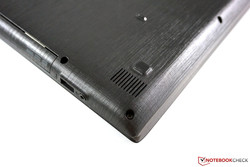
The two speakers of the Acer Aspire E5-473G are at the front of the bottom. The two modules are sufficiently loud, but the sound puts emphasis on the high tones and also tends to rattle. Bass is basically not available and there are no additional software tools to adjust the sound, either. All in all, not a very convincing performance.
There is, however, no criticism for the playback via headphones. The sound via 3.5 mm stereo jack is sufficiently loud and free of background noises. It is also possible to transfer the sound digitally via HDMI or Bluetooth 4.1. The connection with an external Bluetooth speaker (Denon Envaya Mini) was no problem and there were no delays during the playback, either.
Energy Management
Power Consumption
The power consumption is usually a bit higher than the other two rivals, which is partly caused by the mechanical hard drive. The maximum consumption under load fluctuates between 50.5 and 61.5 Watts and once again confirms the processor throttling (also see Temperature section). The power adaptor has a nominal output of 65 Watts and is therefore just sufficient to cover the maximum consumption. There is, however, not much headroom, so charging can take quite a while when you use the notebook at the same time. The power adaptor also gets very hot at 63.5 °C, so you should avoid any contact and not hide it under pillows or blankets.
Our review unit also consumed 0.1 Watts when it was turned off and 0.3 Watts in standby.
| Acer Aspire E5-473G-59QT GeForce 940M, 5200U, Seagate ST500LM000 Solid State Hybrid Drive | Lenovo Yoga 3 14-80JH0035GE GeForce 940M, 5200U, Samsung SSD PM851 256 GB MZYTE256HMHP | Lenovo ThinkPad E450 20DDS01E00 Radeon R7 M260, 5200U, Samsung CM871 MZ7LF192HCGS | |
|---|---|---|---|
| Power Consumption | 22% | 10% | |
| Idle Minimum * | 4.6 | 3.2 30% | 2.6 43% |
| Idle Average * | 6.3 | 5.5 13% | 7.7 -22% |
| Idle Maximum * | 8.8 | 6.8 23% | 8.7 1% |
| Load Average * | 43.3 | 40 8% | 43.1 -0% |
| Load Maximum * | 61.5 | 40.4 34% | 45.4 26% |
* ... smaller is better
| Off / Standby | |
| Idle | |
| Load |
|
Battery Runtime
Besides the slightly higher consumption values, you can also notice the smaller battery when you look at the runtime figures. While the comparison devices use a 47-Wh module each, our Aspire E5 only has a 37-Wh battery (4-cell). It is therefore clearly behind the two rivals in all scenarios.
We simulate the maximum runtime with the Battery Eater Reader’s Test (minimum brightness, energy-saving mode, wireless modules turned off), which determines almost 10 hours, while the rivals manage 5 (Yoga 3 14) and 7 hours (ThinkPad E450) more. The worst case scenario (Battery Eater Classic Test, maximum brightness, high-performance mode, Nvidia GPU) will result in a runtime of 1 hour and 10 minutes.
Especially the result in the more realistic Wi-Fi test (adjusted brightness at 150 cd/m², power profile "Balanced") is not very impressive for a supposedly mobile 14-inch notebook at 4.5 hours. The two rivals from Lenovo last at least 1.5 hours longer under the same conditions.
The playback of a DVD movie is possible for around 4 hours; a movie from the hard drive runs 1 hour longer.
| Acer Aspire E5-473G-59QT GeForce 940M, 5200U, Seagate ST500LM000 Solid State Hybrid Drive | Lenovo Yoga 3 14-80JH0035GE GeForce 940M, 5200U, Samsung SSD PM851 256 GB MZYTE256HMHP | Lenovo ThinkPad E450 20DDS01E00 Radeon R7 M260, 5200U, Samsung CM871 MZ7LF192HCGS | |
|---|---|---|---|
| Battery Runtime | 61% | 62% | |
| Reader / Idle | 565 | 888 57% | 999 77% |
| WiFi v1.3 | 280 | 381 36% | 409 46% |
| Load | 70 | 134 91% | 115 64% |
Pros
Cons
Verdict
A multimedia notebook or all-rounder with a 14-inch screen is a pretty rare thing these days, because this segment is usually occupied by business notebooks. Acer's Aspire E5 wants to be an inexpensive all-rounder and can actually convince in some respects. This includes the generally sturdy chassis with the appealing design, the decent input devices and the quiet operation. The dedicated GeForce 940M also performs very well and allows occasional gaming sessions.
The TN-panel does, however, suffer from a blue cast as well as the low brightness and just cannot compete with modern consumer devices. Acer’s notebook also has some thermal issues, because the processor runs hot and has to be throttled when you use the dedicated GPU. The battery runtimes cannot keep up with the rivals, either.
You can clearly notice where Acer tried to save money. We would expect the display and the speakers in a cheap office notebook, and the cooling solution has problems with the heat of the dedicated graphics card.
You should have a look at other devices if it does not necessarily have to be a 14-inch notebook. 15-inch multimedia notebooks in particular are more common and there are more models you can choose from.
Acer Aspire E5-473G-59QT
-
08/22/2015 v4(old)
Andreas Osthoff


 Deutsch
Deutsch English
English Español
Español Français
Français Italiano
Italiano Nederlands
Nederlands Polski
Polski Português
Português Русский
Русский Türkçe
Türkçe Svenska
Svenska Chinese
Chinese Magyar
Magyar